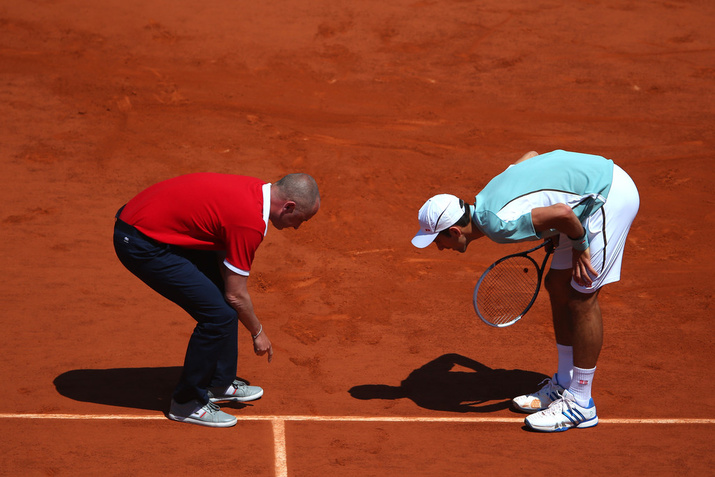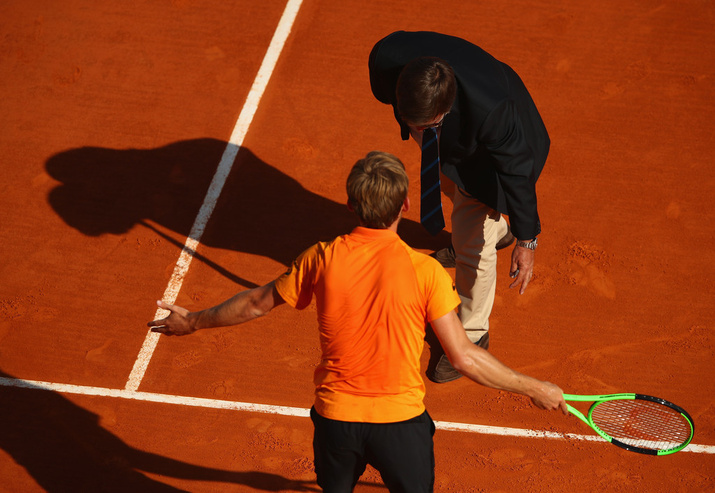Don't miss any stories → Follow Tennis View
FollowEyes Wide Shut: When Will Hawk-Eye Land In Paris?
While all four grand slam tournaments are contested over the course of two weeks and award equal prize money to the men and women, some glaring and not altogether inconsequential differences persist: a deciding set tie-breaker is only implemented at the US Open, play is not permitted on the middle Sunday at Wimbledon and perhaps most unsettling is the absence of the electronic line-calling system, hawk-eye at the French Open.
Recently, the focus within the industry seems fixated on speeding up the game with no-ad scoring and a shot clock; how about implementing hawk-eye at all ATP and WTA clay court events and spare us the endless squabbling between the chair umpire and the players?

A significant amount of time is wasted when players incessantly circle marks, argue with each other and/or the chair and demand that he/she step down from the chair and check it. How can one be sure that the “right” mark was circled? Was it barely in or just barely out? At this point, it’s beyond comical and ironically, recommending that the players call their own lines seems quite rational.
The need for greater uniformity at the four slams is undeniable and that includes the implementation of hawk-eye and the challenge system. At the Australian Open, Wimbledon and the US Open, players receive three challenges per set and an additional challenge should the set be decided by a tie-breaker.
At the Monte Carlo Rolex Masters, David Goffin only wished he had one challenge let alone three. He was the victim of a horrendous overrule by the chair umpire which, without question, irrevocably altered the trajectory of the match.
The world #13, having just dismantled Novak Djokovic in the quarters, was up a break on the king of clay, Rafa Nadal, when the chair made this egregious mistake. Goffin, clearly rattled and dejected, lost his focus and control of the match and succumbed in straight sets.

This was not the first time, nor will it be the last, that the outcome of a match pivoted on a bad call. Fortunately, at the other three slams, the players retain some semblance of control via the challenge system.
Hawk-eye does not claim to be 100% accurate but at least it is devoid of human intervention and error. Many argue that “checking the mark” is inherently more accurate than an electronic line-calling system which is accurate within a millimeter or two of the actual mark.
The technology is there; it would need to be optimized for the surface and recalibrated for approximately thirty minutes between matches. Clay, unlike hardcourts, is always in flux and therefore, in need of repeated recalibration.
As the clay shifts and swirls with every shot and slide, so too does the margin of error. Hawk-eye will invariably be less effective on clay than on hardcourts or grass but if I must choose between thirty-minute delays and incessant bickering between players and the chair, I will gladly do my time!
Many a fan, myself included, has often wondered why hawk-eye is visible to the tv audience but is not made available to the chair umpire on the two main stadiums at Roland Garros. It was installed on court Phillipe Chartrier and court Suzanne Lenglen solely as an analytical tool to be employed by television broadcasters.
The players are not privy to this information during the match but can easily access it at a later date and if and when they do, they may conclude that they were unjustly penalized for someone else’s mistake. In addition to the need for recalibration, the cost to install the system is upwards of $40,000 per court.
At the other three grand slam tournaments, the system is not installed on every court rendering court assignments inherently unfair. If you are a lower ranked player relegated to Court 22 at Flushing Meadows - good luck and hope that the lines people and chair have had adequate sleep and a recent eye exam and even then, errors will ensue.
If the French Tennis Federation maintains the status quo and refuses to install hawk-eye on all courts at Roland Garros, then at the bare minimum they must implement the three-challenge rule per set utilized at the other slams in order to minimize the never-ending procession of ball circling, disgruntled players, and exhausted umpires.
While the ball undeniably leaves a mark its one subjected to the vicissitudes of interpretation. With eyes wide shut, they chose to build a roof instead of installing hawk-eye so be prepared for more of the same next season. Unfortunately, on the terre battue, the eyes definitely don’t have it!










